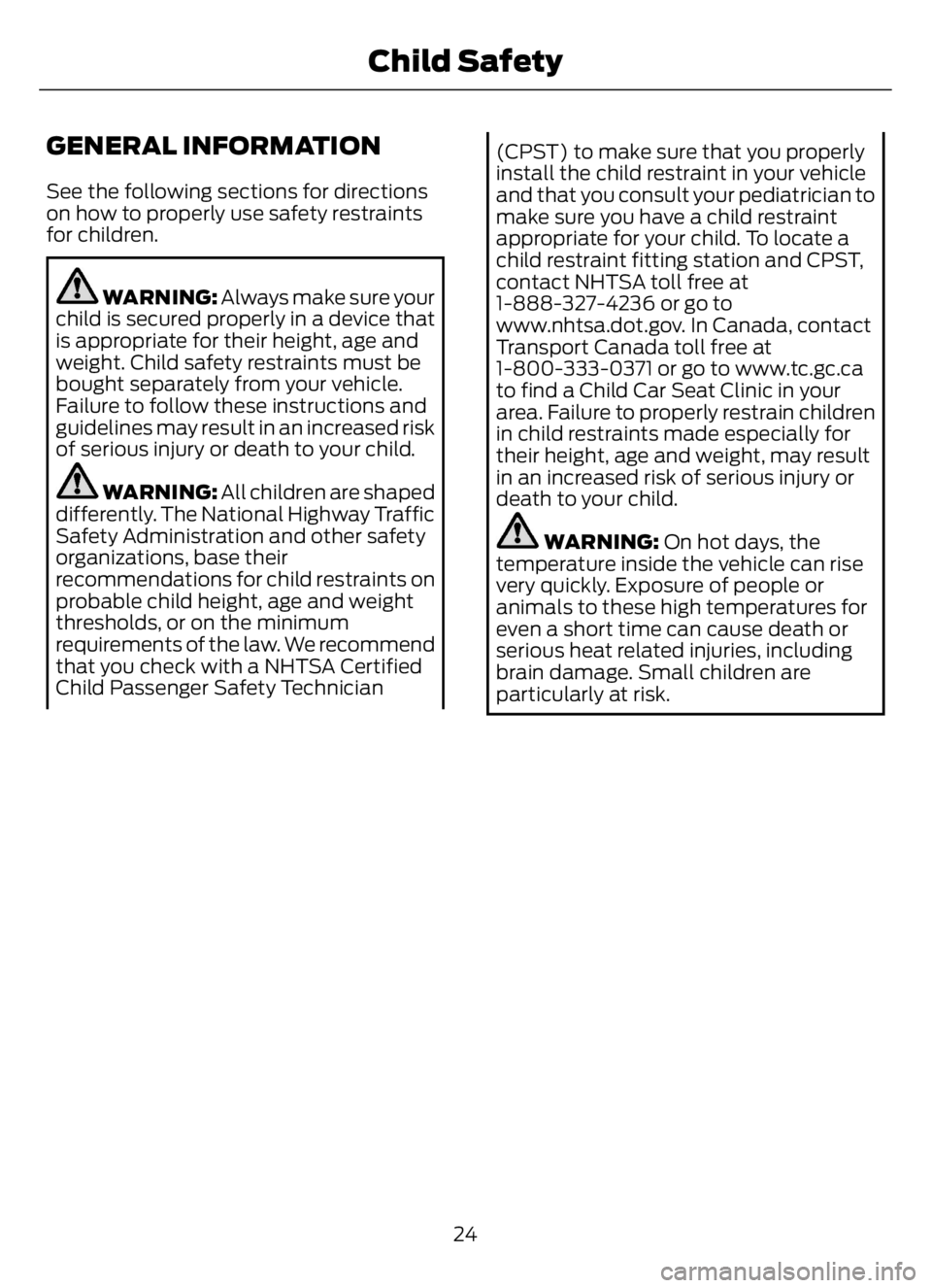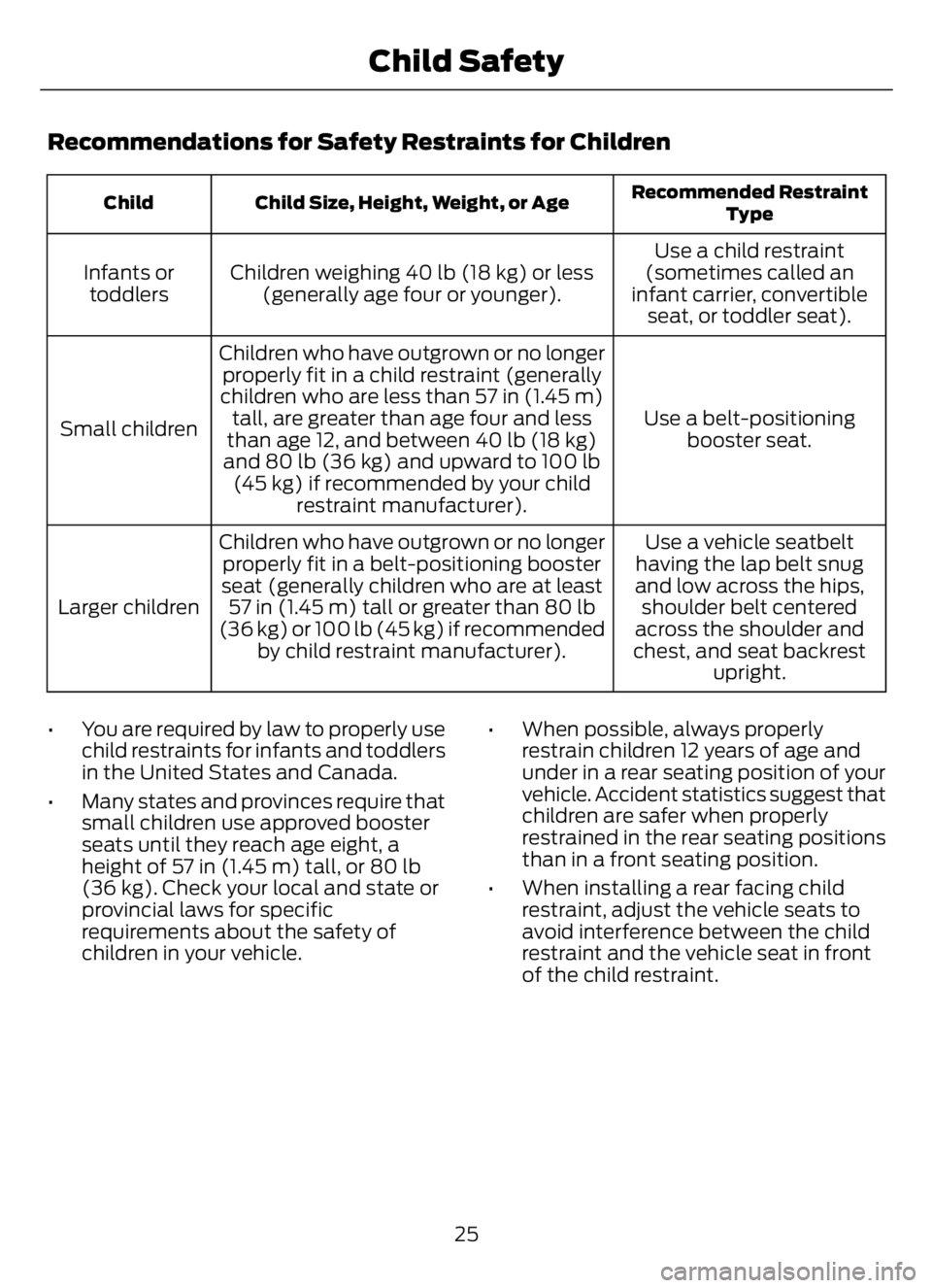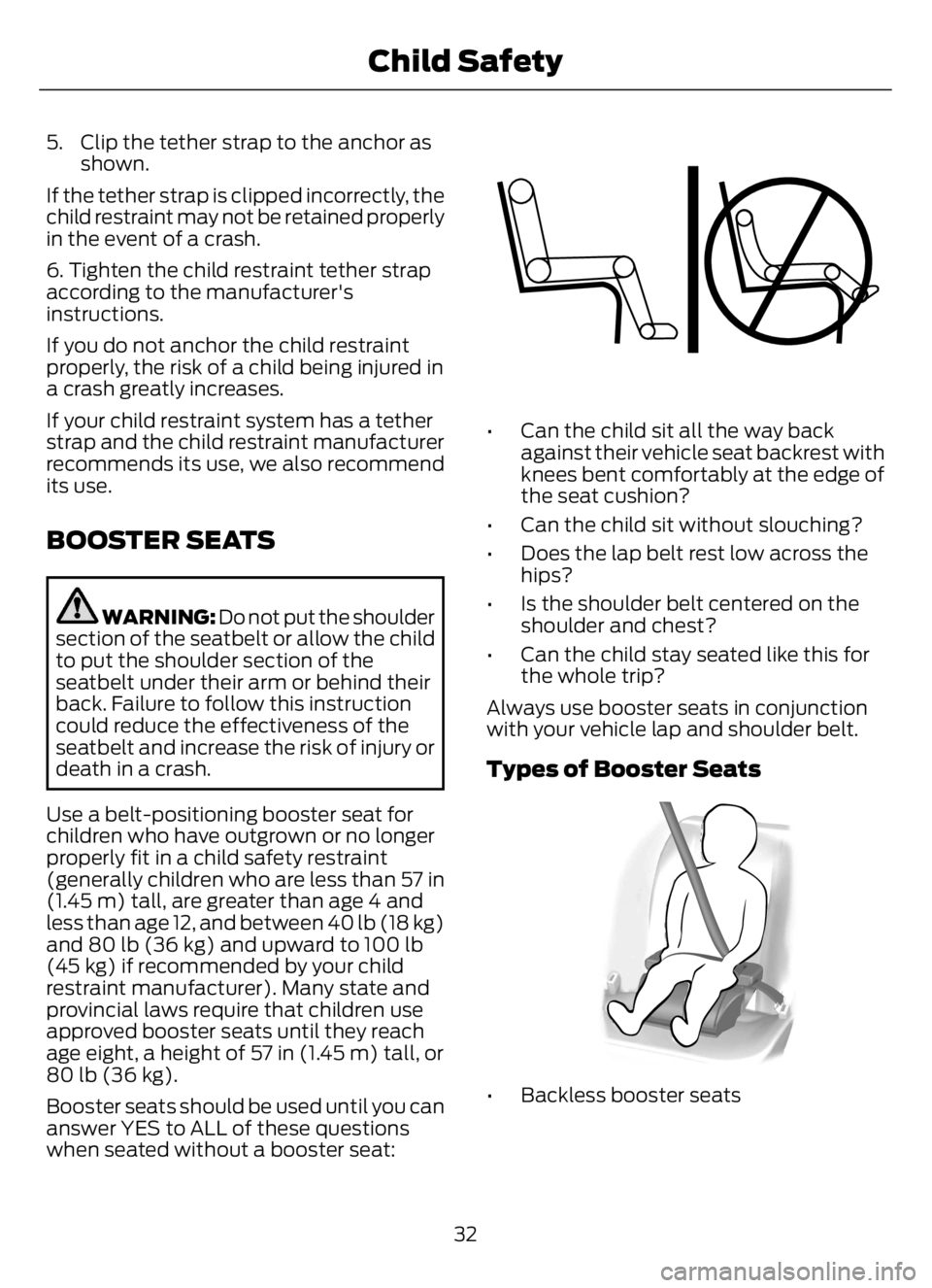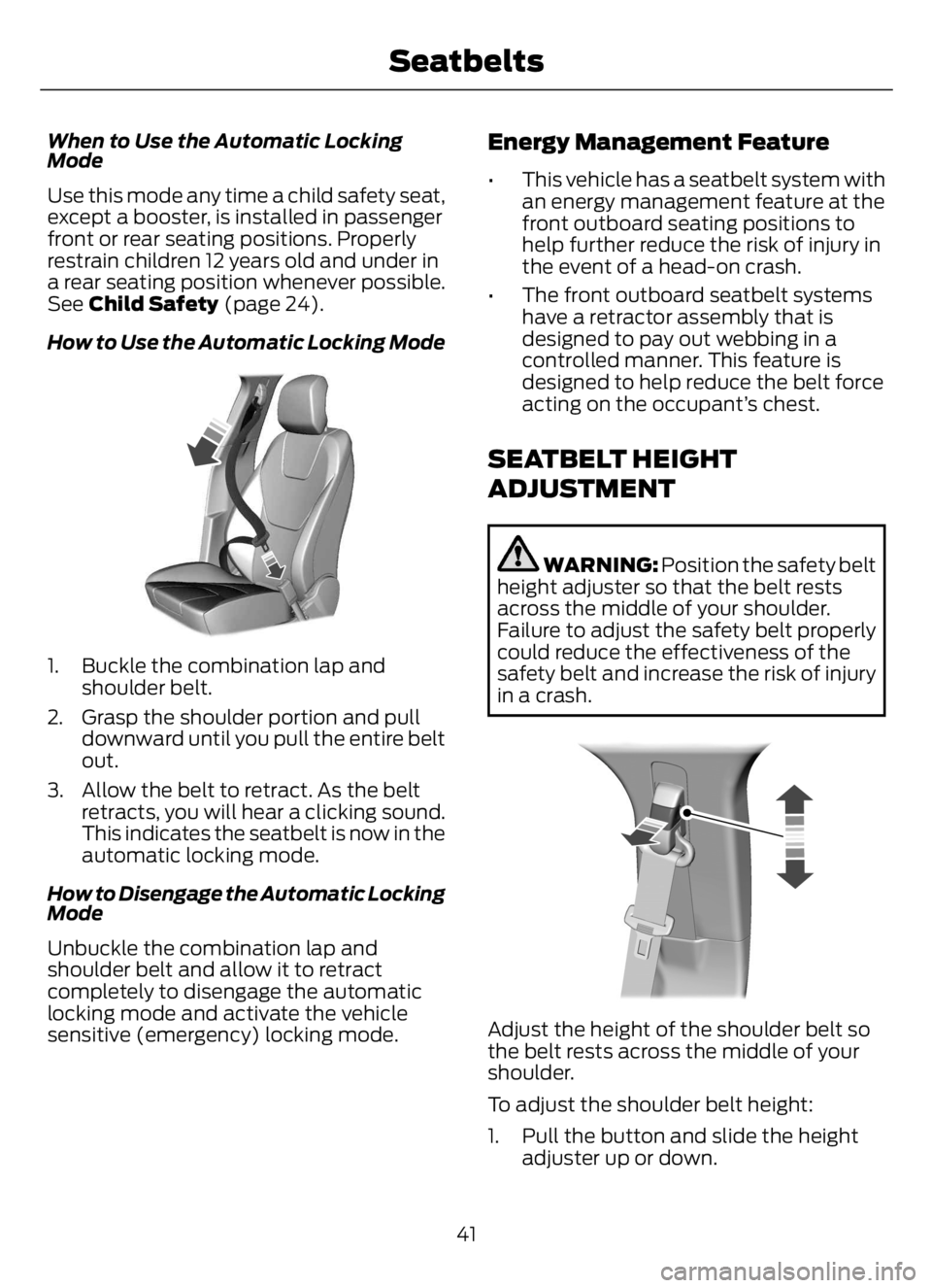2023 FORD F650/750 height
[x] Cancel search: heightPage 5 of 378

Introduction
About This Manual ..........................................7
Symbols Glossary ..........................................10
Data Recording ................................................13
Perchlorate ........................................................17
Ford Credit .........................................................17
Replacement Parts Recommendation
............................................................................1 7
Special Notices ...............................................18
Mobile Communications Equipment
...........................................................................1 9
Export Unique Options ...............................20
Federal Highway Administration
Regulation ...................................................20
Entering, Exiting or Climbing on This
Vehicle ...........................................................20
Environment
Protecting the Environment .......................21
Noise Pollution Control ................................21
At a Glance
Instrument Panel ...........................................23
Child Safety
General Information .....................................24
Installing Child Restraints ..........................26
Booster Seats .................................................32
Child Restraint Positioning ........................34
Child Safety Locks ........................................35
Seatbelts
Principle of Operation ..................................37
Fastening the Seatbelts .............................38
Seatbelt Height Adjustment ......................41
Seatbelt Warning Lamp and Indicator
Chime ............................................................42
Seatbelt Reminder ........................................42
Child Restraint and Seatbelt
Maintenance ...............................................44
Seatbelt Extensions .....................................44
Keys and Remote Controls
General Information on Radio
Frequencies .................................................45
Remote Control .............................................46
Replacing a Lost Key or Remote Control
...........................................................................47
Doors and Locks
Locking and Unlocking ...............................48
Security
Passive Anti-Theft System .......................50
Steering Wheel
Adjusting the Steering Wheel ....................51
Cruise Control - Vehicles With: Adaptive
Cruise Control ..............................................51
Cruise Control - Vehicles With: Cruise
Control ...........................................................51
Information Display Control ......................52
Horn ....................................................................52
Wipers and Washers
Windshield Wipers ........................................53
Windshield Washers ....................................53
Lighting
General Information .....................................54
Lighting Control .............................................54
Autolamps .......................................................55
Instrument Lighting Dimmer ....................55
Headlamp Exit Delay ...................................55
Daytime Running Lamps - Vehicles With:
Daytime Running Lamps (DRL) ..........56
Daytime Running Lamps - Vehicles With:
Configurable Daytime Running Lamps
..........................................................................5 6
Automatic High Beam Control ................56
Direction Indicators .......................................57
Interior Lamps .................................................57
1
Table of Contents
Page 28 of 378

GENERAL INFORMATION
See the following sections for directions
on how to properly use safety restraints
for children.
WARNING: Always make sure your
child is secured properly in a device that
is appropriate for their height, age and
weight. Child safety restraints must be
bought separately from your vehicle.
Failure to follow these instructions and
guidelines may result in an increased risk
of serious injury or death to your child.
WARNING: All children are shaped
differently. The National Highway Traffic
Safety Administration and other safety
organizations, base their
recommendations for child restraints on
probable child height, age and weight
thresholds, or on the minimum
requirements of the law. We recommend
that you check with a NHTSA Certified
Child Passenger Safety Technician
(CPST) to make sure that you properly
install the child restraint in your vehicle
and that you consult your pediatrician to
make sure you have a child restraint
appropriate for your child. To locate a
child restraint fitting station and CPST,
contact NHTSA toll free at
1-888-327-4236 or go to
www.nhtsa.dot.gov. In Canada, contact
Transport Canada toll free at
1-800-333-0371 or go to www.tc.gc.ca
to find a Child Car Seat Clinic in your
area. Failure to properly restrain children
in child restraints made especially for
their height, age and weight, may result
in an increased risk of serious injury or
death to your child.
WARNING: On hot days, the
temperature inside the vehicle can rise
very quickly. Exposure of people or
animals to these high temperatures for
even a short time can cause death or
serious heat related injuries, including
brain damage. Small children are
particularly at risk.
24
Child Safety
Page 29 of 378

Recommendations for Safety Restraints for Children
Recommended Restraint
Type Child Size, Height, Weight, or Age Child
Use a child restraint
(sometimes called an
infant carrier, convertible
seat, or toddler seat). Children weighing 40 lb (18 kg) or less
(generally age four or younger). Infants or
toddlers
Use a belt-positioning
booster seat. Children who have outgrown or no longer
properly fit in a child restraint (generally
children who are less than 57 in (1.45 m)
tall, are greater than age four and less
than age 12, and between 40 lb (18 kg)
and 80 lb (36 kg) and upward to 100 lb
(45 kg) if recommended by your child
restraint manufacturer). Small children
Use a vehicle seatbelt
having the lap belt snug
and low across the hips,
shoulder belt centered
across the shoulder and
chest, and seat backrest
upright. Children who have outgrown or no longer
properly fit in a belt-positioning booster
seat (generally children who are at least
57 in (1.45 m) tall or greater than 80 lb
(36 kg) or 100 lb (45 kg) if recommended
by child restraint manufacturer). Larger children
• You are required by law to properly use
child restraints for infants and toddlers
in the United States and Canada.
• Many states and provinces require that
small children use approved booster
seats until they reach age eight, a
height of 57 in (1.45 m) tall, or 80 lb
(36 kg). Check your local and state or
provincial laws for specific
requirements about the safety of
children in your vehicle.• When possible, always properly
restrain children 12 years of age and
under in a rear seating position of your
vehicle. Accident statistics suggest that
children are safer when properly
restrained in the rear seating positions
than in a front seating position.
• When installing a rear facing child
restraint, adjust the vehicle seats to
avoid interference between the child
restraint and the vehicle seat in front
of the child restraint.
25
Child Safety
Page 36 of 378

5. Clip the tether strap to the anchor as
shown.
If the tether strap is clipped incorrectly, the
child restraint may not be retained properly
in the event of a crash.
6. Tighten the child restraint tether strap
according to the manufacturer's
instructions.
If you do not anchor the child restraint
properly, the risk of a child being injured in
a crash greatly increases.
If your child restraint system has a tether
strap and the child restraint manufacturer
recommends its use, we also recommend
its use.
BOOSTER SEATS
WARNING: Do not put the shoulder
section of the seatbelt or allow the child
to put the shoulder section of the
seatbelt under their arm or behind their
back. Failure to follow this instruction
could reduce the effectiveness of the
seatbelt and increase the risk of injury or
death in a crash.
Use a belt-positioning booster seat for
children who have outgrown or no longer
properly fit in a child safety restraint
(generally children who are less than 57 in
(1.45 m) tall, are greater than age 4 and
less than age 12, and between 40 lb (18 kg)
and 80 lb (36 kg) and upward to 100 lb
(45 kg) if recommended by your child
restraint manufacturer). Many state and
provincial laws require that children use
approved booster seats until they reach
age eight, a height of 57 in (1.45 m) tall, or
80 lb (36 kg).
Booster seats should be used until you can
answer YES to ALL of these questions
when seated without a booster seat:
E142595
• Can the child sit all the way back
against their vehicle seat backrest with
knees bent comfortably at the edge of
the seat cushion?
• Can the child sit without slouching?
• Does the lap belt rest low across the
hips?
• Is the shoulder belt centered on the
shoulder and chest?
• Can the child stay seated like this for
the whole trip?
Always use booster seats in conjunction
with your vehicle lap and shoulder belt.
Types of Booster Seats
E68924
• Backless booster seats
32
Child Safety
Page 38 of 378

E14259742597
If the booster seat slides on the vehicle
seat upon which it is being used, placing a
rubberized mesh sold as shelf or carpet
liner under the booster seat may improve
this condition. Do not introduce any item
thicker than this under the booster seat.
Check with the booster seat
manufacturer's instructions.
CHILD RESTRAINT
POSITIONING
WARNING: Airbags can kill or injure
a child in a child seat. Never place a
rear-facing child seat in front of an active
airbag. If you must use a forward-facing
child seat in the front seat, move the
vehicle seat upon which the child seat is
installed all the way back. When
possible, all children age 12 and under
should be properly restrained in a rear
seating position. If all children cannot be
seated and restrained properly in a rear
seating position, properly restrain the
largest child in the front seat.
WARNING: Always carefully follow
the instructions and warnings provided
by the manufacturer of any child
restraint to determine if the restraint
device is appropriate for your child's size,
height, weight, or age. Follow the child
restraint manufacturer's instructions and
warnings provided for installation and
use in conjunction with the instructions
and warnings provided by your vehicle
manufacturer. A safety seat that is
improperly installed or utilized, is
inappropriate for your child's height, age,
or weight or does not properly fit the
child may increase the risk of serious
injury or death.
WARNING: Never let a passenger
hold a child on his or her lap while your
vehicle is moving. The passenger cannot
protect the child from injury in a crash,
which may result in serious injury or
death.
WARNING: Never use pillows,
books, or towels to boost a child. They
can slide around and increase the
likelihood of injury or death in a crash.
34
Child Safety
Page 42 of 378

• Height adjuster at the front outboard
seating positions.
• Safety belt pretensioner at the front
outboard seating positions.
E71880€ Safety belt warning light and chime.
FASTENING THE SEATBELTS
The front outboard and rear safety
restraints in the vehicle are combination
lap and shoulder belts.
E142587
1. Insert the belt tongue into the proper
buckle (the buckle closest to the
direction the tongue is coming from)
until you hear a snap and feel it latch.
Make sure you securely fasten the
tongue in the buckle.
E142588
2. To unfasten, press the release button
and remove the tongue from the
buckle.
Using the Seatbelt with Cinch
Tongue (Front Center and Rear
Center Seats Only)
The cinch tongue slides up and down the
belt webbing when the belt is stowed or
while putting seatbelts on. When the lap
and shoulder seatbelt is buckled, the cinch
tongue allows the lap portion to be
shortened, but pinches the webbing to
keep the lap portion from getting longer.
The cinch tongue is designed to slip during
a crash, so always wear the shoulder belt
properly and do not allow any slack in
either the lap or shoulder portions.
Before you can reach and latch a lap and
shoulder belt having a cinch tongue into
the buckle, you may have to lengthen the
lap belt portion of it.
E1162708E162708
1. To lengthen the lap belt, pull some
webbing out of the shoulder belt
retractor.
2. While holding the webbing below the
tongue, grasp the tip (metal portion)
of the tongue so that it is parallel to the
webbing and slide the tongue upward.
3. Provide enough lap belt length so that
the tongue can reach the buckle.
38
Seatbelts
Page 44 of 378

Using Seatbelts During Pregnancy
WARNING: Always ride and drive
with your seatback upright and properly
fasten your seatbelt. Fit the lap portion
of the seatbelt snugly and low across
the hips. Position the shoulder portion of
the seatbelt across your chest. Pregnant
women must follow this practice. See
the following figure.
E1422590
Pregnant women should always wear their
seatbelt. Position the lap belt portion of a
combination lap and shoulder belt low
across the hips below the belly and worn
as tight as comfort allows. Position the
shoulder belt to cross the middle of the
shoulder and the center of the chest.
Seatbelt Locking Modes
WARNING: If your vehicle is
involved in a crash, have the seatbelts
and associated components inspected
as soon as possible. Failure to follow this
instruction could result in personal injury
or death.The safety restraints in the vehicle are
combination lap and shoulder belts. The
driver seatbelt has the first type of locking
mode. The front outboard passenger and
rear outboard seat seatbelts have both
types of locking modes described as
follows:
Vehicle Sensitive Mode
This is the normal retractor mode, which
allows free shoulder belt length
adjustment to your movements and
locking in response to vehicle movement.
For example, if the driver brakes suddenly
or turns a corner sharply, or the vehicle
receives an impact of about 5 mph
(8 km/h) or more, the combination
seatbelts will lock to help reduce forward
movement of the driver and passengers.
In addition, the retractor is designed to lock
if you pull the webbing out too quickly. If
the seatbelt retractor locks, slowly lower
the height adjuster to allow the seatbelt
to retract. If the retractor does not unlock,
pull the seatbelt out slowly then feed a
small length of webbing back toward the
stowed position. For rear seatbelts, recline
the rear seat backrest or push the seat
backrest cushion away from the seatbelt.
Feed a small length of webbing back
toward the stowed position.
Automatic Locking Mode
In this mode, the shoulder belt
automatically prelocks. The belt still
retracts to remove any slack in the
shoulder belt. The automatic locking mode
is not available on the driver seatbelt or
optional front center or rear center
seatbelt.
40
Seatbelts
Page 45 of 378

When to Use the Automatic Locking
Mode
Use this mode any time a child safety seat,
except a booster, is installed in passenger
front or rear seating positions. Properly
restrain children 12 years old and under in
a rear seating position whenever possible.
See Child Safety (page 24).
How to Use the Automatic Locking Mode
E142591E142591
1. Buckle the combination lap and
shoulder belt.
2. Grasp the shoulder portion and pull
downward until you pull the entire belt
out.
3. Allow the belt to retract. As the belt
retracts, you will hear a clicking sound.
This indicates the seatbelt is now in the
automatic locking mode.
How to Disengage the Automatic Locking
Mode
Unbuckle the combination lap and
shoulder belt and allow it to retract
completely to disengage the automatic
locking mode and activate the vehicle
sensitive (emergency) locking mode.
Energy Management Feature
• This vehicle has a seatbelt system with
an energy management feature at the
front outboard seating positions to
help further reduce the risk of injury in
the event of a head-on crash.
• The front outboard seatbelt systems
have a retractor assembly that is
designed to pay out webbing in a
controlled manner. This feature is
designed to help reduce the belt force
acting on the occupant’s chest.
SEATBELT HEIGHT
ADJUSTMENT
WARNING: Position the safety belt
height adjuster so that the belt rests
across the middle of your shoulder.
Failure to adjust the safety belt properly
could reduce the effectiveness of the
safety belt and increase the risk of injury
in a crash.
E145664E145664
Adjust the height of the shoulder belt so
the belt rests across the middle of your
shoulder.
To adjust the shoulder belt height:
1. Pull the button and slide the height
adjuster up or down.
41
Seatbelts